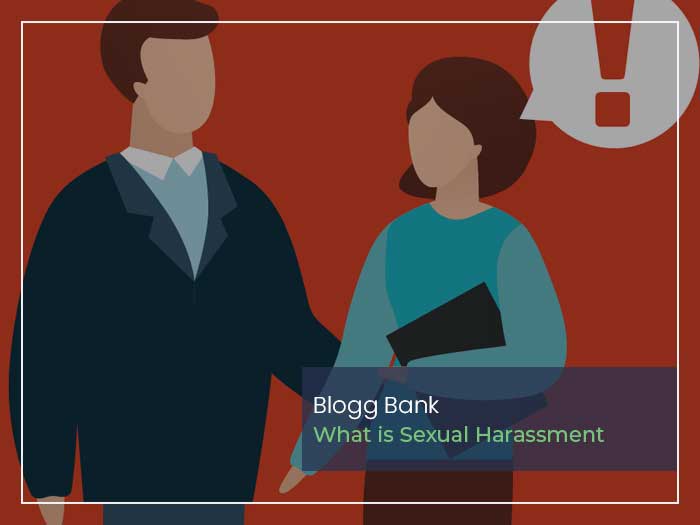Sexual harassment includes unwelcome sexual advances, requests for sexual favors, and other verbal or physical harassment of a sexual nature within the workplace or learning environment, consistent with the Equal Employment Opportunity Commission (EEOC). harassment doesn’t always need to be specifically about sexual behavior or directed at a selected person. for instance, negative comments about women as a gaggle could also be a sort of harassment.
Although harassment laws don’t usually cover teasing or offhand comments, these behaviors also can be upsetting and have a negative emotional effect.
What does harassment look like
Sexual harassment can occur during a sort of circumstance. The harasser can identify with any gender and have any relationship to the victim, including being an immediate manager, indirect supervisor, coworker, teacher, peer, or colleague.
Some sorts of harassment include
- Making conditions of employment or advancement hooked into sexual favors, either explicitly or implicitly.
- Physical acts of sexual abuse.
- Requests for sexual favors.
- Verbal harassment of a sexual nature, including jokes pertaining to sexual acts or sexual orientation.
- Unwanted touching or physical contact.
- What is the difference between harassment and sexual assault? What about sexual misconduct?
Sexual harassment may be a broad term, including many sorts of unwelcome verbal and physical sexual attention. sexual abuse refers to sexual contact or behavior, often physical, that happens without the consent of the victim. harassment generally violates civil laws—you have a right to figure or learn without being harassed—but in many cases isn’t a criminal act, while sexual abuse usually refers to acts that are criminal. Some sorts of sexual abuse include:
- Penetration of the victim’s body also referred to as rape.
- Attempted rape.
- Forcing a victim to perform sexual acts, like head or penetration of the perpetrator’s body.
- Fondling or unwanted sexual touching.
- Unwelcome sexual advances.
- Discussing sexual relations/stories/fantasies at work, school, or in other inappropriate places.
- Feeling pressured to interact with someone sexually.
- Exposing oneself or performing sexual acts on oneself.
- Unwanted sexually explicit photos, emails, or text messages.
Sexual misconduct may be a non-legal term used informally to explain a broad range of behaviors, which can or might not involve harassment. for instance, some companies prohibit sexual relationships between coworkers, or between an employee and their boss, albeit the connection is consensual.
Where can harassment occur
Sexual harassment can occur within the workplace or learning environment, sort of a school or university. It can happen in many various scenarios, including after-hours conversations, exchanges within the hallways, and non-office settings of employees or peers.
What am I able to do once I witness sexual harassment
You may have heard the term bystander intervention to explain stepping in to assist if you see someone who could be in peril or in danger of sexual abuse. Bystander intervention also can be a helpful strategy if you witness harassment. You don’t need to be a hero to form a positive impact on someone’s life, and you’ll intervene in a way that matches your comfort level and is acceptable for things. If you select to step in, you’ll be ready to give the person being harassed an opportunity to urge to a secure place or leave things. Below are a number of the steps you’ll take if you see someone being sexually harassed—just remember to C.A.R.E., and in fact, keep your own safety in mind in the least times.
Create a distraction. Do what you’ll to interrupt the harassment, or distract those participating within the harassment. But remember to form sure that you simply aren’t putting yourself in peril by doing this. If someone looks like they might become violent, don’t draw their attention.
Ask directly. Talk directly with the one that is being harassed. If they’re being harassed at work or school, offer to accompany them anytime they need to satisfy with the harasser. If a lover is worried about walking alone to their car in the dark, offer to steer with them.
Refer to an authority. The safest thanks to intervening for both you and therefore the person being harassed could also be to usher in an authority. you’ll ask another employee, watchman, RA in your dorm, bartender, or bouncer, and that they will often be willing to step in.
Enlist others. It is often hard to step in alone, especially if you’re worried about your own safety or if you don’t think you’ll be ready to assistance on your own. it’s going to be an honest idea to enlist the assistance of a lover or another bystander.
What are some effects of sexual harassment ?
Experiencing harassment may cause some survivors to face emotional, physical, or psychological state concerns. a number of them might include:
Emotional effects:
- Anger
- Fear
- Humiliation
- Shame
- Guilt
- Betrayal
- Violation
- Powerlessness and loss of control
- Mental health effects
- Anxiety
- Depression
- Panic attacks
- PTSD
- Difficulty concentrating
- Loss of motivation
- Substance abuse
- Suicidal ideation
- Physical effects
- Increased stress levels
- Headaches
- Fatigue
- Sleep disturbances
- Eating disturbances
